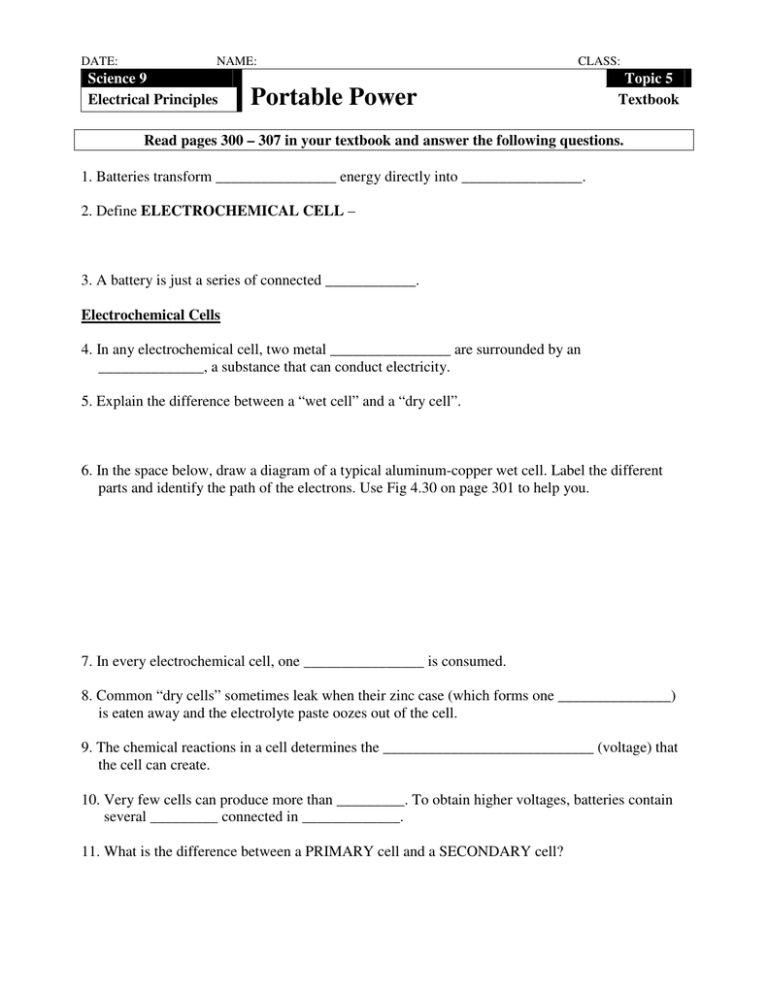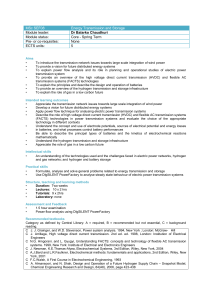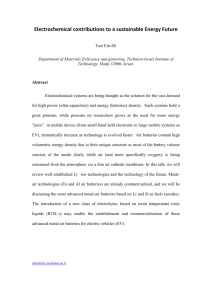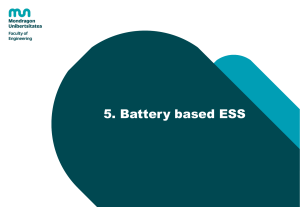Portable Power
advertisement

DATE: NAME: Science 9 Electrical Principles CLASS: Portable Power Topic 5 Textbook Read pages 300 – 307 in your textbook and answer the following questions. 1. Batteries transform ________________ energy directly into ________________. 2. Define ELECTROCHEMICAL CELL – 3. A battery is just a series of connected ____________. Electrochemical Cells 4. In any electrochemical cell, two metal ________________ are surrounded by an ______________, a substance that can conduct electricity. 5. Explain the difference between a “wet cell” and a “dry cell”. 6. In the space below, draw a diagram of a typical aluminum-copper wet cell. Label the different parts and identify the path of the electrons. Use Fig 4.30 on page 301 to help you. 7. In every electrochemical cell, one ________________ is consumed. 8. Common “dry cells” sometimes leak when their zinc case (which forms one _______________) is eaten away and the electrolyte paste oozes out of the cell. 9. The chemical reactions in a cell determines the ____________________________ (voltage) that the cell can create. 10. Very few cells can produce more than _________. To obtain higher voltages, batteries contain several _________ connected in _____________. 11. What is the difference between a PRIMARY cell and a SECONDARY cell? Review 12. What are the main components in a voltaic (electrochemical) cell? Describe the function of each component. 13. How do batteries differ from cells? What arrangement of three cells will result in the greatest electric current? Which arrangement would result in the greatest longevity for the battery? 14. If you have five 1.5 V cells put together into a battery, what is the total voltage of the batter? 15. If your portable CD player requires 3.0 V of voltage to work, how many 1.5 V batteries will you need? 16. Batteries come in all shapes, sizes and varies in voltage. Beside each of the following situations, list what kinds of features would you need in a battery for it? Hearing aids – Cell phones – Mp3 player – Environmentally friendly vehicles – Digital cameras – Laptop computers -



